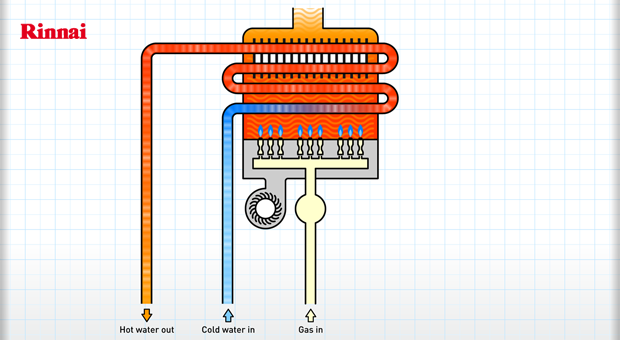Water is heated, on demand, using a burner and exchanger system with a 'pilot' ignition system.
What are instantaneous water heaters
Instantaneous water heaters are a basic form of continuous flow water heaters. These appliances have non electronic ignitions and poor temperature control. The appliances are also a less efficient variant of the continuous flow water heaters.
How do instantaneous water heaters work?
Instantaneous appliances use a sparker and pilot ignition system, a diaphragm water governor and a thermostat. When the sparker button is depressed, the pilot is ignited. When a hot water tap is opened the pressure drops which operates the diaphragm. This in turn allows gas through to the burner to be ignited by the pilot and enables the water to be heated. The thermostat increases/decreases the gas flow to the burner which will determine the heat energy used to heat the water.
Instantaneous water heater can be run off NG or LPG, there are also electrical versions of instantaneous water heaters available.
What are the pros and cons of continuous flow hot water systems?
| Advantages | Disadvantages |
|---|---|
| Instantaneous hot water | Fluctuating water temperatures |
| Higher energy efficient ratings than storage systems | Fluctuating water pressure |
| No recovery times | Can become quite costly to replace an older version |
| Constant pilot means energy used even when no requirement for heating and hot water | |
| Limited capabilities to satisfy peak hour demand | |
| Lower performance from prolonged exposures to poor quality untreated water | |
| Consideration needs to be given to available gas supply |

